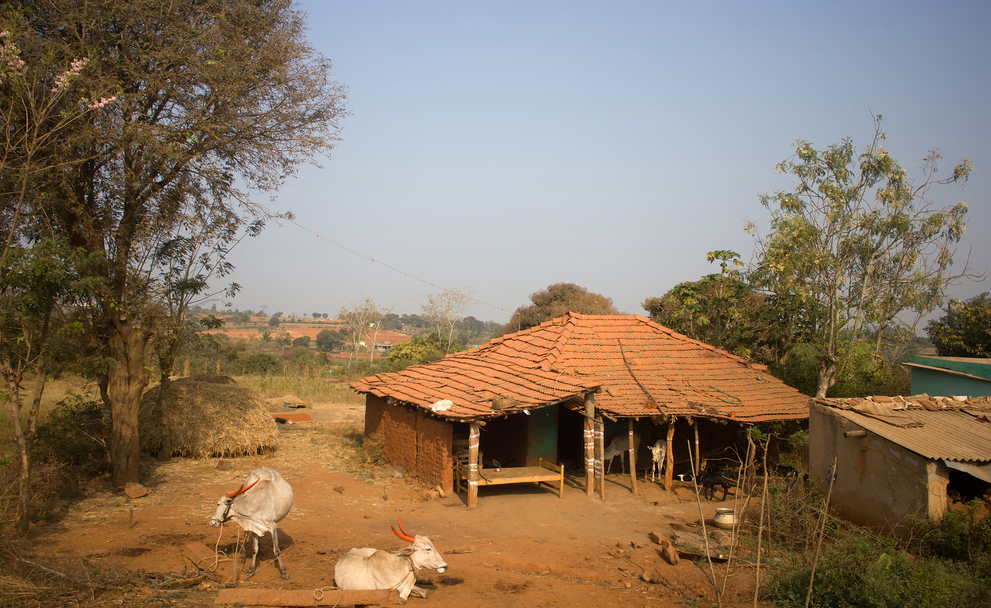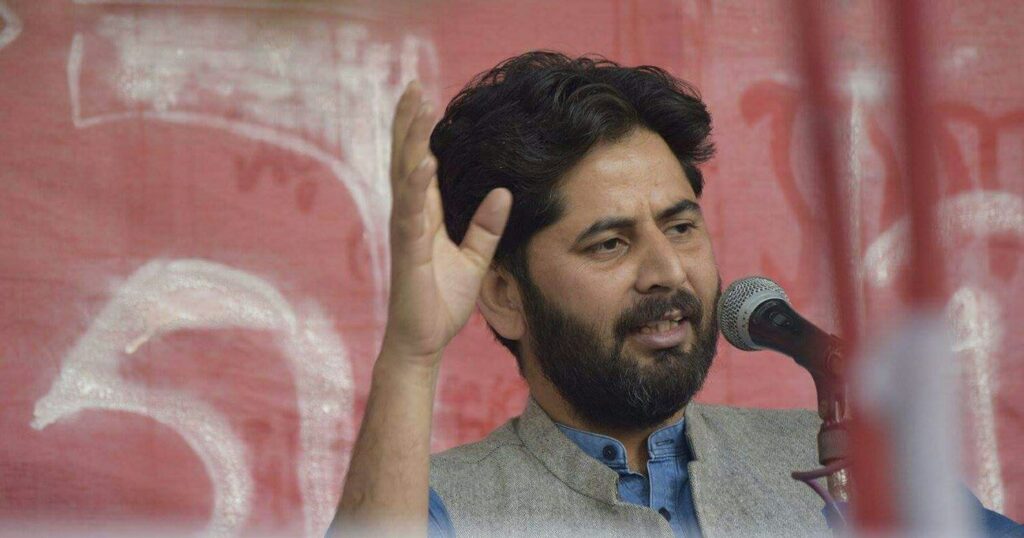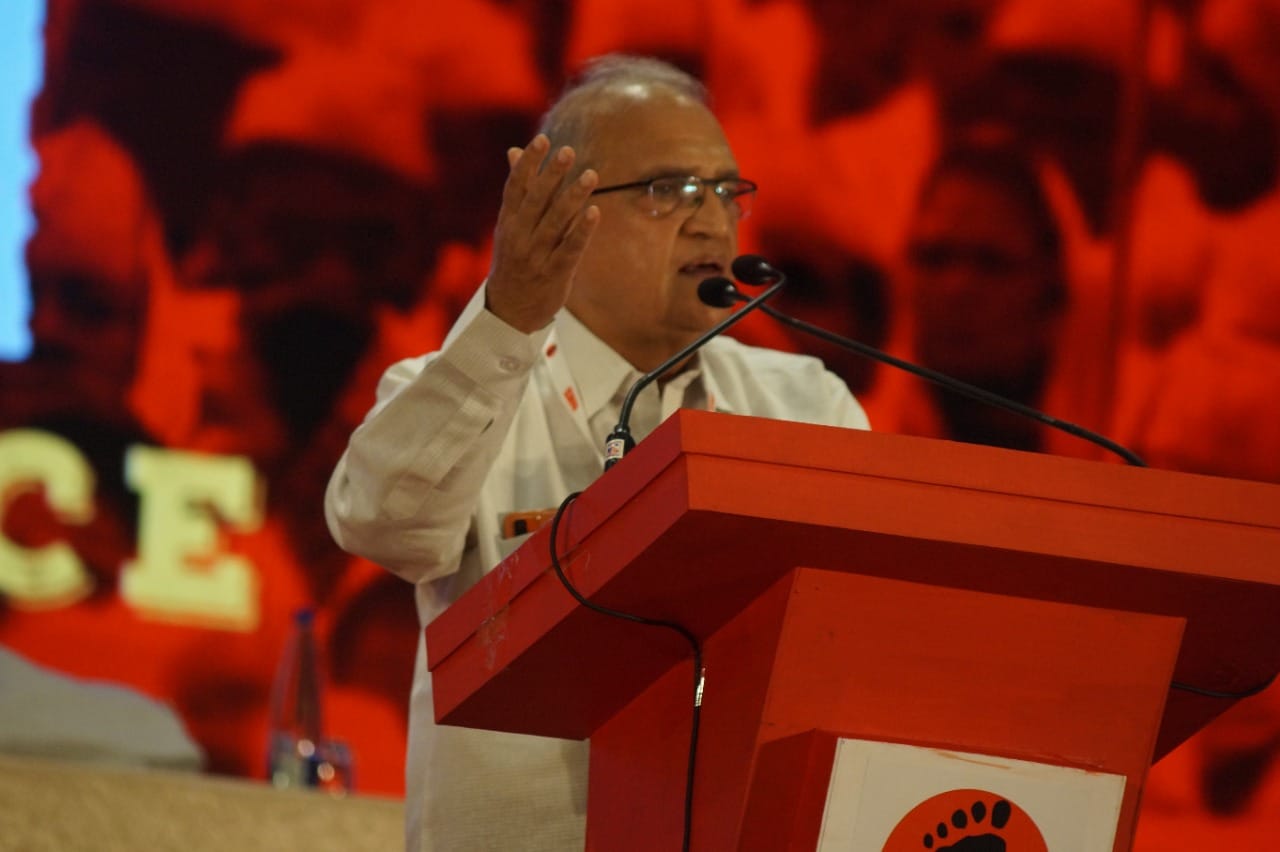Housing for All: A Basic Need but a Pipe Dream for Majority in Rural India
Comrade Vikram Singh writes: An hour before midnight, at least 50 anxious people gathered near the village pond, Chotahi village, Bhagpura Panchayat in Bhibutipur tehsil, Samastipur district, Bihar. They convened to discuss how to save their houses as they heard the land on which their houses were built had been termed illegal and designated to be developed as a green belt by the state government of Bihar under the project ‘Jal Jeevan Haryali’.
They would be forced to leave their houses without any alternative place to live. These are kutcha houses like huts but this is entirely what they have. They have spent decades in these dwellings. Almost all of them are lower-caste agricultural workers, not just economically deprived but socially oppressed for generations.
This group is not an isolated case. This is the fate of millions of landless people in India, who do not have even a small piece of land to construct a roof to cover their heads. These house sites are the first step bringing stability and ending the uncertainty of their lives.
The working class of India fought against the imperialist British for independence with hopes of getting an equal share in resources; but even after 75 years of independence, these hopes are yet to be fulfilled. Now they are diminishing, as millions of families do not have even this basic need, a house of their own.
According to the 2011 Census, the average individual in rural India consumed 40.03 square feet of space, the average person in urban consumed 39.20 square feet. In the rural areas, a family of five live in a somewhat larger house, though the difference is insignificant. The lack of land cannot be the primary reason why people in the rural regions live in small dwellings. Rather it is the unequal distribution of land and lack of resources among the poor.
There is no concrete data on people without homes in India. The last official estimate for India’s homeless was 1.77 million according to the 2011 Census. This number has undoubtedly increased in the last decade as countless people are displaced due to numerous reasons but primarily due to the land grab by corporates or by the government on their behalf.
The problem of housing is one of the primary issues of every human being and should be central to any development model. In fact, access to adequate housing is recognised as a human right and the Governments are responsible for ensuring adequate housing for all. Internationally, the right to housing is recognised as the responsibility of the government. Perhaps the first mention of the right to adequate housing as a commitment of government was in the Universal Declaration of Human Rights in 1948.
At this point, it is very important to understand what housing means. Normally we visualise housing in narrow terms. When we talk about housing, it does not only mean four walls and a roof. The United Nations Committee on Economic, Social and Cultural Rights in General Comment No. 4 (1991) on the Right to Adequate Housing states that the right to housing should not be interpreted in a narrow or restrictive sense. Merely having a roof over one’s head or viewing shelter exclusively as a commodity does not define housing. Rather it should be seen as the right to live somewhere with security, peace and dignity (United Nations 1991).
Despite the perfunctory statements and international commitments, there is huge gap between what is on paper and people’s lives. The Indira Awas Yojana (IAY) scheme was designed to provide, at best, a house structure or building (or part of a building). In 2015, Prime Minister Narendra Modi had also launched Pradhan Mantri Awas Yojana- Gramin (PMAY-G, or Housing for All), the so-called world’s largest housing programming for the rural poor which aims to build 30 million houses for the rural poor for 2022.
In fact, all these schemes have become tools of propaganda without actually bringing any material change in the lives of homeless people. The Modi government is widely known for its expertise in dealing with numbers and making false claims without any concrete explanations. Recently Prime Minister Modi claimed that 10 million houses had actually been handed over to families in rural areas under this programme but since the scheme was launched in 2015, the total number of houses now built-in rural areas stands at just over 7 million.
The prevalent schemes do not address the problem of housing, as it is much more complex. The present schemes do not help the landless, who do not have land to construct a home. In fact, for getting a monetary grant in most of the schemes, one needs to have legal ownership of land.
Though there are ample provisions on papers with government to provide land to landless in rural India, short of land reform acts of states with different land ceiling limits (which were never implemented apart from a few states), there are provisions to distribute village common lands to the landless with a priority to the SC and ST. But these were not used until and unless a people’s movement had forced the government to do so, or some sensitive administrative officials have worked against the political tide to bring people relief.
This is one aspect of the problem. There are landless families, having homes but the land does not belong to them. There is always a danger of displacement from their homes by the government or the landowner. Large sections of tribals are being driven away from their native places. People inhabiting these places face various kinds of humiliations by landowners and government officials. People of Chotta Panoal village of the Sujanpur area, district Pathankot in Punjab, are living in houses constructed on the land of a big landlord. Whenever there is a confrontation or tension between local people and workers or family members of the landlord, they block the passages to this basti. Additionally, whenever a family tries to renovate or replace their old building with new concrete construction, the landlord takes them to court adding to their miseries. This is just one example from a long list of problems faced by the people who do not have ownership of land.
Landlessness is a big question to be addressed in India and housing is closely linked with it. It is a real obstacle towards ensuring housing for all. Here we are not dealing in detail with the problem of landlessness and the issue of land reforms but are discussing the issue just to highlight the abysmal land relations. According to the India Spend report (2016), 4.9% of the population hold one-third of India’s agricultural land, and a major landowner generally possessed 45 times the extent of land that a marginal farmer does.
The agenda of land reforms and distribution of land has vanished from political discourse. Some hold the view that the possibilities of land reforms have been exhausted and future growth can only come from private investment in the rural areas. In the recent past and especially after neoliberal reforms, there is a reversal of land reforms. The alarming proportion of land loss can be gauged if one compares the percentage of landless households during the 43rd Round Survey of NSSO (1987-88) to the 68th Round (2011-12) NSSO Survey. The landless households in the countryside (possessing less than 0.01 hectare of land) increased from 35% to 49% during this period.
On one hand, the Government of India boasts that it is working on housing for all but its policies are only limited to some schemes which are in general on the path of new economic policies adopted by the former UPA and present NDA Government, displacing people from their land. Acts such as Forest Right Act, which is supposed to give rights of land to the tribals and traditional forest dwellers, is being used to displace millions of tribals from their land. Thousands of acres of agricultural land are also snatched from farmers in the name of development projects and is handed over to corporates.
According to the recent report of The Housing and Land Rights Network (HLRN)on forced evictions in India the central and state government authorities demolished over 177,700 houses in 2017, 2018, and 2019, which means that at least 519 people lost their homes daily, with almost five homes being destroyed hourly, or about 22 people being evicted every hour. Furthermore, nearly 15 million people across India currently live under the threat of displacement. Though deeply disturbing, these figures are conservative, as they only reflect cases known to HLRN, and thus present a partial image of the true scale of this grave but unreported national crisis. Even during the pandemic, state authorities in India forcibly evicted at least 20,000 people from their homes (between March 16 and July 31, 2020), as recorded by HLRN.
‘Do waqt ki roti and sir chipane ke liye chhat’ (two times food and a shelter for housing) is considered the bare minimum to live but in India when we are celebrating 75 years of India’s Independence, people of India are still struggling for this bare minimum. India has ranked 101 in the hunger index; millions are starving in a nation where the Food Corporation of India is stocking double the required food grains. Similarly, the dream of owning a house is a dream too big to become true for millions despite the availability of land. The policies of the successive Governments controlled by corporate-landlord nexus are failing India, not dearth of resources. India is blessed with rich resources in but the development model followed by the Government is depriving the majority and benefiting a few.
Vikram Singh is joint-secretary of the All India Agricultural Workers’ Union.




